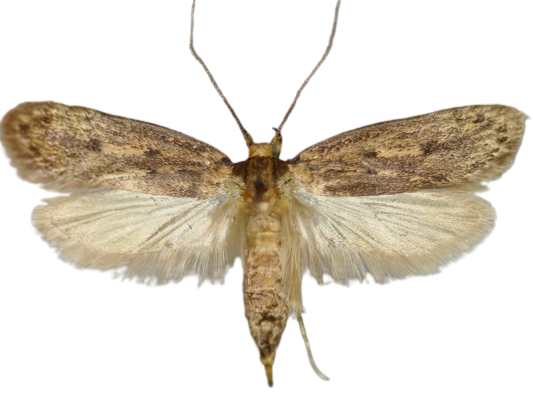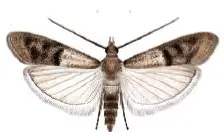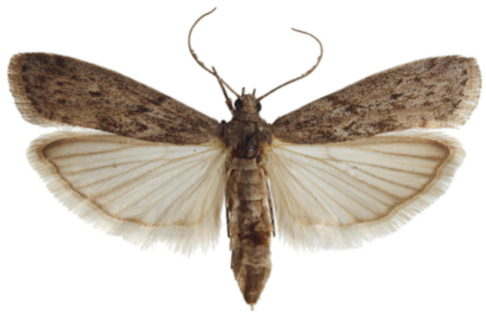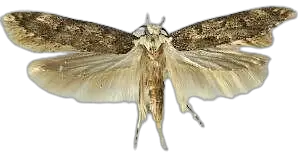A pantry moth is usually found in food storage areas and is most common in the United States. They are also found in different countries but have other names. One of the names pantry moths are known for is “Indian food moths.” There are also different types of moths, but the most known ones are found in food stored in pantries or cabinets. But what are pantry moths?
Pantry moths are tiny flying insects ranging from grey to brown to tan; they are most often seen inside food packaging facilities, such as kitchens, food shops, and food processing factories. They are well-known for wreaking havoc on food, destroying it when the larvae of pantry moths infest it.
Pantry moths are just interested in breeding and reproducing. So they look for the most favorable place to raise their larvae, which is the food storage area. This is why they infest the kitchen and deposit their eggs in food, so the larvae can feed when they hatch.
Grain-loving pantry moths are an issue that many households face; they suddenly emerge in your kitchen, pantry, cellar, or garage.
Why do you get moths in your pantry?
Typically, you’ll discover them in your kitchen despite their scary appearance. Pantry moths are drawn to pantry staples such as flours, pasta, cereals, grains, bread, spices, and other dry, processed foods.
They often enter the home via doors and windows and gaps around vents and wires. The pantry moths’ keen sense of smell is precisely how they locate the ideal habitat in your pantry.
Unfortunately, when there is food availability, they feel secure. The easiest approach to prevent these pantry bugs is to use airtight containers and carefully seal stored items.
Are pantry moths harmful to your health?
While pantry moths do not pose a threat to humans’ or pets’ health, they do cause damage to pantry items. These moths do not bite or sting; however, they significantly contaminate food. While this is not a significant health hazard, it is undeniably inconvenient. Therefore, when an infestation begins, all tainted food is recommended to be thrown away.
Recovering from a moth infestation may be time-consuming and costly. However, preventing moth infestation is as simple as examining food packaging before buying it at the grocery store and properly storing it in sealed, glass, hard plastic, or tin containers.
How did moths get in my pantry?
Pantry moths usually enter your house via dry food products tainted at a food processing or packaging facility. However, if the items are kept in cardboard or thin plastic containers are infested, allowing the larvae to eat through and transfer to other containers, they may spread once inside your house.
While they resemble clothes moths, pantry moths have significant distinguishing characteristics. With a 5/8-inch wingspan, they are relatively little. Their wings are light grey, with some outer wings being more reddish-brown. A black stripe connects the top and lower wings.
What is the life cycle of pantry moths?
Although pantry moths are little, they can lay up to 400 eggs at a time and hatch within a week. When they reach the larval stage, the real harm starts. Once they get to this stage of life, they will chew everything. This process might take up to 2-3 months. They are often seen in cracks and crevices, and some even burrow under the food.
After 15-20 days, the moths have developed into adults. Adult females deposit hundreds of eggs immediately on or near food sources, completing the lifecycle. The adult pantry moth with its wings appears after up to 20 days.
Signs of pantry moths
How to know if you have pantry moths? There are different ways to notice signs of pantry moths infestation.
- You’ll see them: A moth, a few little brown caterpillars, or even adults in or near the pantry are telltale signs.
- Webbing and secretions: Webbing or sticky secretions might be observed around the corners or even on the interior of packages.
- Stench and grain clumping: An unpleasant odor may emanate from the food container, or the grains may clump together in more severe instances.
How to control pantry moths infestation
Follow these proven steps for how to rid of pantry moths. You can take a few simple things to help prevent these moths from reaching your pantry and wreaking havoc. Remember that the pantry moth may live and flourish on crumbs while cleaning.
- You shoulds start by cleaning and organizing your pantry.
- Empty cabinets and closets where you are storing dry food first.
- Inspect every packaged food that has been opened thoroughly for evidence of moths.
- If you find any contaminated food, it should be removed from the house rather than just thrown away within.
- You should adequately vacuum all shelves, fissures, and crevices to remove food crumbs and insects.
- After vacuuming, empty the vacuum and clean with hot, soapy water or a mix of water and vinegar.
- You should seal all gaps in the walls of the cupboards to keep pantry moths out.
- You can use pantry moth traps to prevent further infestations and warn about moths’ presence.
How to prevent pantry moths
Several major initiatives can assist you in reducing the number of moth entry points into the residence.
- Ensure that food is kept correctly in airtight containers at all times.
- Use sealants to seal off the areas surrounding pipes and utility conduits.
- Use a filler substance to fill gaps and fissures in your walls and flooring.
- Reduce or eliminate things that can attract moths, such as dampness and open food.
- Vacuum often to eliminate attractants and to remove these insects and their eggs.
Types of pantry moths
There are 4 different types of pantry moths, but the most frequent moth is the Indian Meal Moth, which is sometimes referred to as a pantry moth.

Brown House Moth (Hofmannophila pseudospretella) —
This moth is fond of pantry food, clothes, and carpet fibers. This moth is significantly more of a nuisance than the common pantry moth.

Indian Meal Moth (Plodia interpunctella) –
Indian Meal Moth often referred to as the pantry moth, it is easily identifiable by its grey and brown wings.

Mediterranean Flour Moth (Ephestia kuehniella) –
Mediterranean Flour Moth is a widespread pest that loves cereal grains and flours, prefers moderate climes.

White Shouldered House Moth (Endrosis sarcitrella) —
If not found in homes, you may discover these moths in bird nests due to their preference for animal-derived textiles and nest-like materials.
How to get rid of pantry moths naturally
There is nothing quite like a pantry moth, an unwanted visitor that eats food. Here, you will find how to get rid of pantry moths naturally and stop them from returning. Although pantry moths are damaging pests, you must act quickly to prevent them from eating through and laying eggs on the food kept in your cupboards or pantry.
Follow these methods to naturally get rid of pantry moths and prevent them from returning.
Empty and check the pantry.
Completely decontaminate the infested area by removing cans, boxes, bags, and bottles. Additionally, look out for larvae and minor holes in packages; you are not just looking for pantry moths but also their larvae.
Dispose of containers that are not sealed.
Discard any dry products with open packaging, especially if they have holes you did not create. If you notice even one pantry moth near a particular cabinet or within your pantry, all non-airtight packaging in the region may have been contaminated.
Vacuum and clean with a vinegar and water solution.
Vacuum the pantry to the last square inch, empty the vacuum bag, secure it with a trash bag, and dispose of the waste outdoors. Next, wash the infected area with a 50-50 vinegar-warm water solution, then add peppermint oil to the mixture. Also, mop the floor with the same 50-50 solution.
Do not restock the pantry immediately.
Restock the pantry area you’ve just cleaned after a few weeks. If the situation persists, you may repeat the procedures above, this time expanding the scope to nearby locations without discarding the food you bought to replace what you had previously lost.
How to avoid pantry moths
After successfully eradicating pantry moths, take preventative actions to keep them away. Here is how to avoid pantry moths returning.
- You should store dry items in airtight plastic or glass containers.
- Leave peppermint, bay leaves, mint, or cedar chips visible, maybe in a sachet, around the area.
- Conduct frequent inspections of your cabinets and pantry.
- When you detect pantry moths, act swiftly to restrict their spread as much as possible.
Conclusion
Pantry moths are tiny flying insects mostly found in food storage areas, inside food packaging facilities, such as kitchens, food shops, and food processing factories. They can cause massive damage if they enter your food storage area.
One of the easiest ways for them to enter your house is through the items you bought from a grocery shop. Also through holes in walls or windows and crack walls. Some ways to eliminate moths are by vacuuming, getting rid of infested items, and placing peppermint, bay leaves, mint, or cedar chips in those areas.


Pingback: Can Cats Eat Pantry Moths? – Pantry Geek
Pingback: Can You Get Sick From Eating Pantry Moth Larvae? – Pantry Raider
Pingback: Pantry Moth Infestation Extermination: How to get rid of pantry moths? – Pantry Raider
Pingback: Can Pantry Moths Get Into Sealed Packages? – Pantry Raider
Pingback: Will Mothballs Kill Pantry Moths? – Pantry Raider